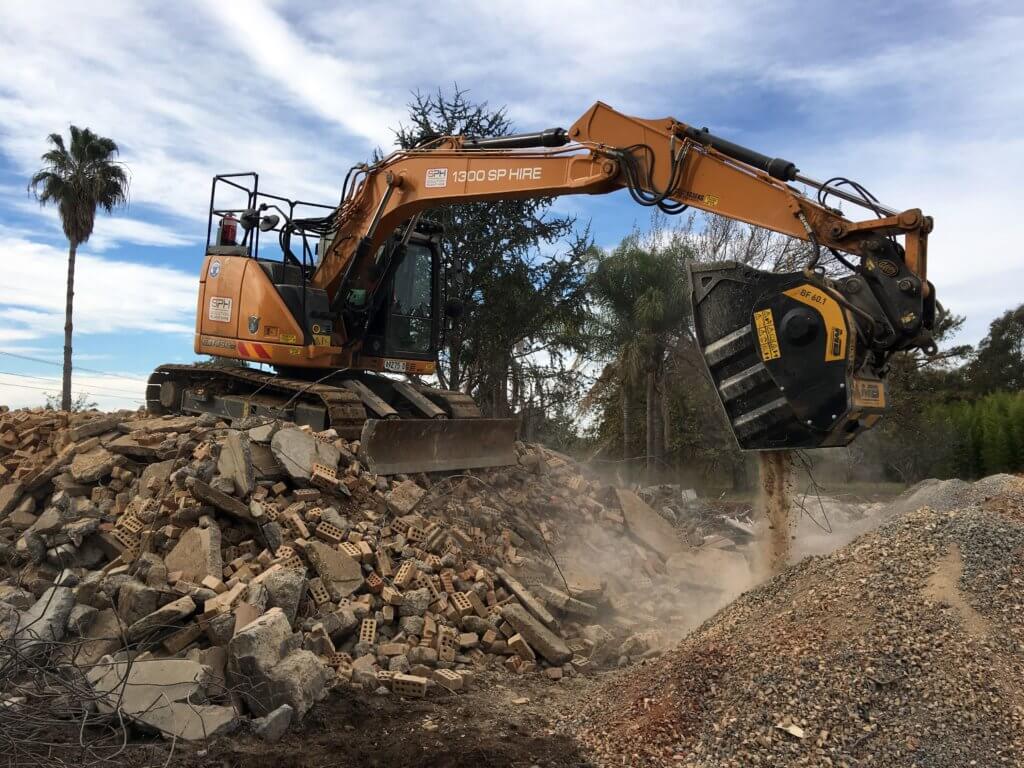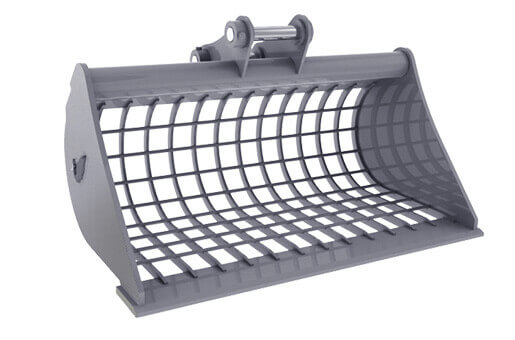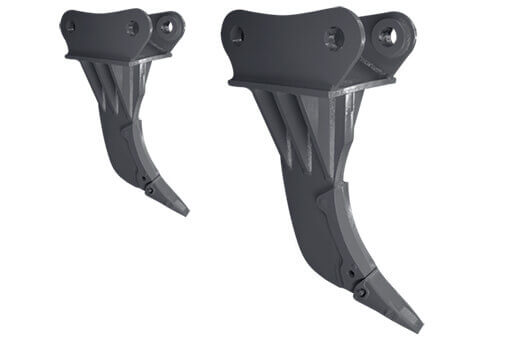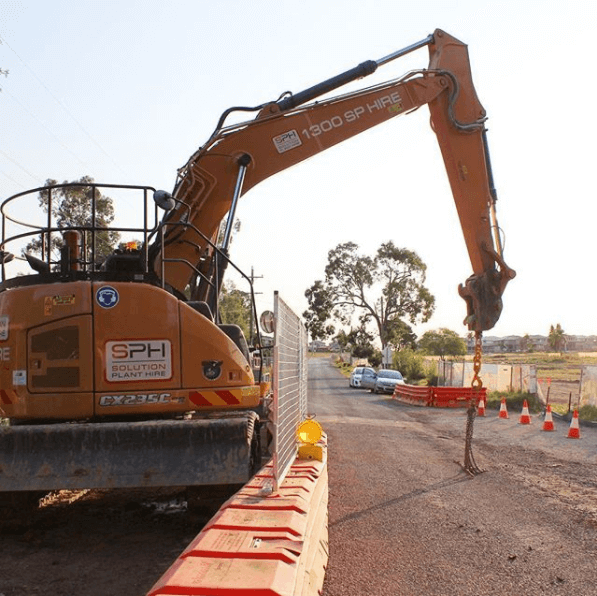
Excavator Attachment Types:
The variety of available excavator attachments perfectly exemplifies how complex the construction industry can be. Even Aussies with many years—or even decades—of experience working within the industry may occasionally come across a task with particularly tricky requirements. This can be the case if you haven’t dealt with something similar before on a job site or if it’s been a while since you last used the equipment required.
Excavators are a common sight around almost every construction project, but the attachments being used will vary depending on the job at hand. In this guide, we’ll take you through the most important attachments to know about to handle any job that comes your way, as well as some insight into whether it makes more sense to buy or hire.
Excavator Buckets

Buckets are among the most common excavator attachments. There are actually many different kinds, from the gummy bucket with a tall, vertical shape to the mud bucket that is long and horizontal like a TV. There’s also the sieve bucket that’s used for removing hard substances like rocks without removing lighter materials such as soil.
Excavator Rakes
Rakes look similar to bucket attachments but ultimately perform different roles. Buckets are made to remove whatever they scoop up, whereas rakes are best used for pushing and flattening. For this reason, rake attachments are great for cleaning up a tract of land once all work in that area or stage of the project has been done.
Excavator Rippers

As implied by their name, rippers are the attachment you need when looking to make an initial ground entry. Because of its single shank, a ripper attachment will pierce the ground more easily and efficiently than a bigger and wider attachment would.
Excavator Trenchers
Once ground entry has occurred, a trencher attachment is often the next tool that comes into play. It’s used for digging trenches, and while it’s true that buckets can also be used for this task, trenchers do the job better and faster. It’s definitely the attachment of choice for any job with big time-pressures.
Excavator Plates
After the ground is broken or trenches have been dug, plates are the best attachment for compacting the soil. They can also be used for driving in and pulling out piles. As an added bonus, a plate attachment offers a safety upgrade over manual ones as it doesn’t require anyone to stand behind it as it operates.
Grabs
Another attachment regularly seen on the job site are Grabs. These are used to grab and move material. Of course, other attachments can help clear land as well. However, the height factor coupled with the ability to use specialist attachments like the rotating grab for particularly complex tasks means a grab can always be useful on a job site.
While the above attachments are usually the most commonly seen and used on a job site, there are many more out there that may be useful for specialist tasks. Cutters and mowers used for vegetation control are great examples.

Buy or hire attachments?
Since attachments don’t require as big of an investment as machines, some Aussies wonder whether they should buy them outright instead of hiring them. Especially considering any construction project can be vulnerable to cost blowouts, as seen in Victoria recently with an estimated $2 billion blowout on the Metro Tunnel, keeping costs down is always critical. No attachment is going to cost you billions, but excess costs can add up rapidly when buying construction equipment.
Hiring means you can always return the attachment at the end of the project. On the other hand, reselling can be tricky as finding a seller who needs that specific piece of equipment can be difficult. If you’re looking to save money and maximise value, hiring attachments is likely the best move.
Excavator Equipment and Attachments
One of the best aspects of working in construction is also one of its biggest challenges. It’s an industry where you can build your skills and experience with a huge variety of projects and possibilities, but sometimes getting everything in order to get the job done can be tough.
It’s always a good idea to actively build a solid understanding of the range of equipment available and how you can use it to your advantage. For more information about any excavator attachments or uses, contact the experts at Solution Plant Hire. We’re always happy to help with any questions you may have.
Which excavator attachments do you find most useful? Let us know in the comments below.
Image: Pixabay



